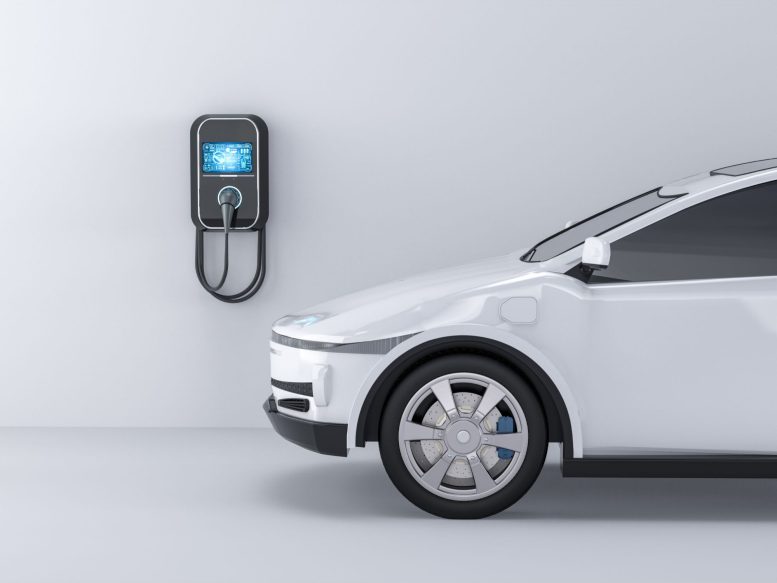
Research indicates that pedestrians face a higher risk of being hit by electric or hybrid vehicles than by petrol or diesel cars, especially in urban settings, calling for enhanced safety measures during the transition to electric vehicles.
Study reveals a higher risk of accidents in urban areas across Great Britain from 2013 to 2017. Researchers call for measures to mitigate this risk as fossil-fuel vehicles are phased out.
A study has found that pedestrians are twice as likely to be hit by electric or hybrid vehicles compared to those powered by petrol or diesel. The research, which was published on May 21, 2024, in the Journal of Epidemiology & Community Health, examined casualty rates in Great Britain from 2013 to 2017.
The risk is greater in urban areas, and governments must take steps to mitigate this safety hazard as they proceed to phase out fossil-fueled vehicles to improve air quality and curb climate change, urge the researchers.
Road traffic injuries are the leading cause of death for children and young people, and 1 in 4 road traffic deaths are of pedestrians, they note. Amid the ongoing shift to electric and hybrid cars, concerns have been raised that these vehicles may pose more of a safety hazard to pedestrians than fossil-fuelled cars because they are quieter, particularly in urban areas where background ambient noise levels are higher.
To explore this further, the researchers compared the differences in pedestrian casualty rates for every 100 million miles of road travel in Great Britain between electric/hybrid and fossil-fuelled cars, using Road Safety Data (STATS19). They estimated annual mileage from National Travel Survey (NTS) data. These only started including hybrid as a vehicle fuel type in 2013 while an archiving glitch has precluded uploading relevant data since 2018—hence the selected study period of 2013-17.
Analysis and Casualty Rates
In total, 32 billion miles of electric/hybrid vehicle travel and 3 trillion miles of petrol/diesel vehicle travel were included in the analysis.
Between 2013 and 2017, there were 916, 713 casualties from reported road traffic collisions in Great Britain. Of these, 120,197 were pedestrians, 96, 285 of whom had been hit by a car or taxi. Three-quarters of these pedestrians—71, 666 (74%)—had been hit by a car or taxi powered by petrol or diesel. Some 1652 (2%) had been hit by an electric or hybrid vehicle. But in nearly 1 in 4 (22, 829; 24%) of the pedestrian casualties, the vehicle type code was missing.
Most collisions occurred in urban areas, a greater proportion of which involved electric or hybrid vehicles than petrol/diesel vehicles: 94% vs 88%. This compares with 6% and 12%, respectively, in rural areas. Based on these data, the researchers calculate that between 2013 and 2017, the average annual casualty rates of pedestrians per 100 million miles of road travel were 5.16 for electric and hybrid vehicles and 2.40 for petrol and diesel vehicles.
This indicates that collisions with pedestrians were, on average, twice as likely with electric and hybrid vehicles as they were with petrol and diesel vehicles, and 3 times as likely in urban areas than in rural areas, say the researchers. They acknowledge several caveats to their findings, including the lack of data beyond 2017 and the absence of vehicle coding in nearly a quarter of cases. And younger, less experienced drivers are more likely to be involved in a road traffic collision and are also more likely to own an electric car, possibly accounting for some of the observed heightened risk associated with these vehicles, they suggest.
“More pedestrians are injured in Great Britain by petrol and diesel cars than by electric cars, but compared with petrol and diesel cars, electric cars pose a greater risk to pedestrians and the risk is greater in urban environments,” they write.
“One plausible explanation for our results is that background ambient noise levels differ between urban and rural areas, causing electric vehicles to be less audible to pedestrians in urban areas,” they suggest.
“From a public health perspective, our results should not discourage active forms of transport beneficial to health, such as walking and cycling; rather they can be used to ensure that any potential increased traffic injury risks are understood and safeguarded against,” they emphasize.
To this end, they conclude that the heightened safety risk posed to pedestrians by electric and hybrid cars “needs to be mitigated as governments proceed to phase out petrol and diesel cars.”
Reference: “Pedestrian safety on the road to net zero: cross-sectional study of collisions with electric and hybrid-electric cars in Great Britain” by Phil J Edwards, Siobhan Moore and Craig Higgins, 21 May 2024, J Epidemiol Community Health.
DOI: 10.1136/jech-2024-221902









Be the first to comment on "Electric Cars Twice As Likely To Hit Pedestrians, According to New Study"